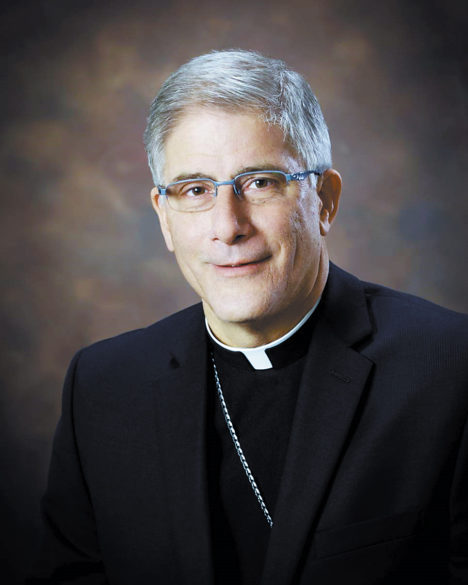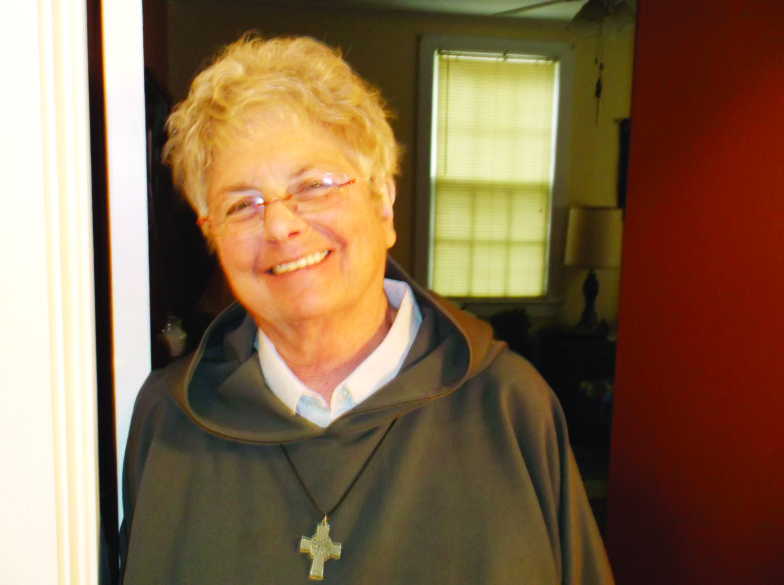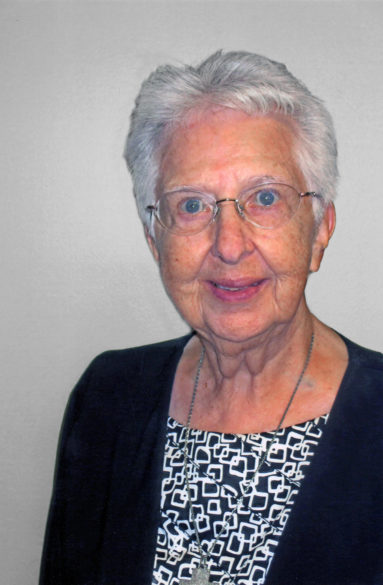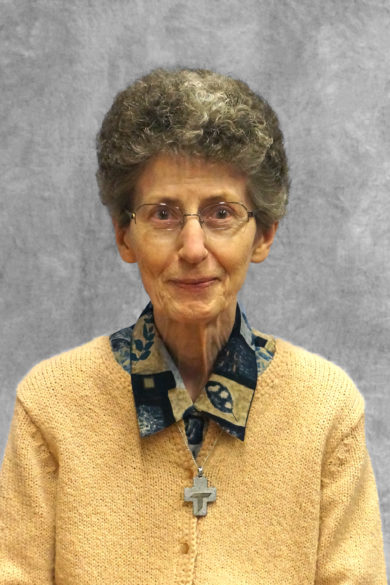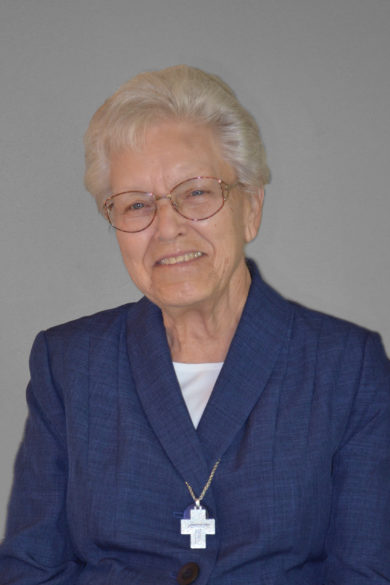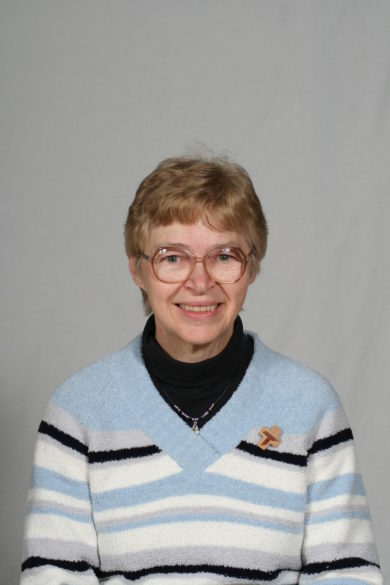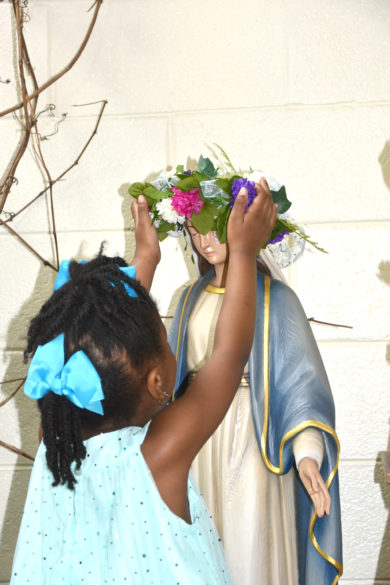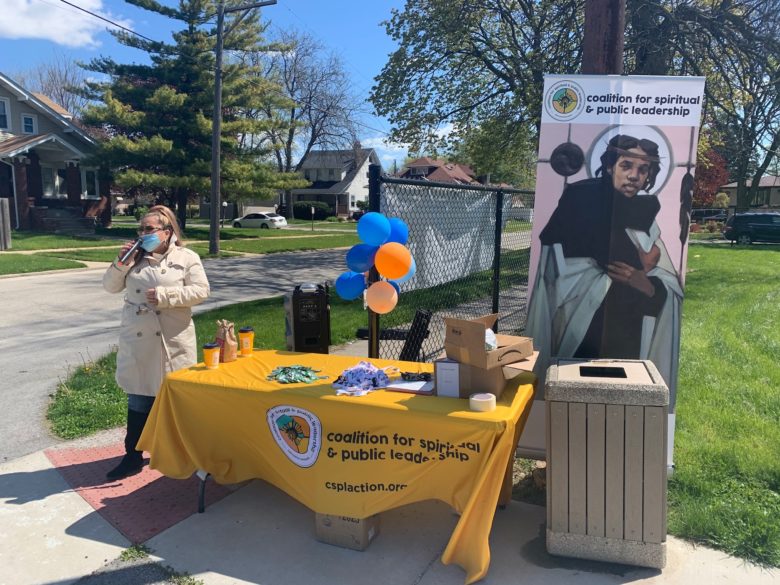By Dorothy Balser
Corinne Anderson speaks about how Holy Family parish in Jackson lives out the calling of their faith on behalf of the “least of these.” (Matthew 25)
- What does it mean to you personally to put your Faith into Action?
I always try to give back to others. My grandmother often quoted the Bible to me when she was helping others. I can hear her saying over and over “to whom much is given, much is expected.” So, I kind of got that from her. It’s important that I try to give back.
When Father Xavier came to Holy Family in 2014, he introduced us to the Norbertine principles. The one I latched onto is something called “self-emptying service,” which is a willingness to cede one’s personal advantage for the good of the community – particularly as expressed in the generosity and discipline required to participate in the structures that support community life. Well there it was – the personal good of the community, the generosity, the structure that supports community life – that’s what Catholicism is all about. - In general, how does Holy Family parish show faith in action?
Since I came to the parish in 1979, there has been a core group of parishioners trying to do outreach. We began by ministering to people within the parish, making sure we touched base with people we didn’t see often. Then sometime early on, we realized we could not continue just ministering to ourselves. We needed to reach out to the community around the church, which is predominantly African American. Many of the apartment complexes around the church were opportunities for us to reach out with Bible school and summer sessions we had for youth. - Describe one or two of the ministries at Holy Family parish where faith in action is seen.
Many people in our parish are involved in faith in action ministries. Besides myself, people that have consistently helped the ministries grow are Joyce Adams, Ann Pullum and Gladys Russell. One of the ways we have reached out is through the faith formation and liturgy committees joining together to adopt the local Green Elementary School. We started taking little packets of school supplies to the school and began inviting students to our Black History Month program at church. We had a youth choir and a boy’s dance group and their parents also came to participate, most of whom are not Catholic.
The other ministry is our food pantry. The diocese sent out a call for proposals to do various faith-building activities in the community. I called the project “going beyond boundaries: witnessing and focusing on life and dignity of the human person” and it was accepted by the pastoral council. So, it has become our theme to go outside the boundaries of the church.
A number of the people we talked with across the street at the senior citizen’s complex became our first group to work with. As we started talking with them, we found out they have many food needs because their money runs out about a week before their check comes each month. So, we had the idea to see if we could get a little help to establish a food pantry and at least work with them. Funds from the diocesan mission grant provided part of the start-up money for that program. We then reached out to the apartments next door that have people with low-income, and the ministry continued to grow. There are now three apartment complexes within a mile of the church where we serve people from the food pantry. We reported to the parish what we were doing and soon started what we call a “20-20 club.” We found that we could work with the Mississippi Food Network to get most of the USDA food for free, but other necessities that are not on the USDA list, like jiffy, beans, etc. are supported by the 20-20 club, which is 20 people paying $20 per month to help pay for the $450 in extra food supplies.
We started small with one of the closets in the parish hall and Cowboy Maloney gave us a good deal on some freezers. Now we serve about 40 to 50 families each month. We are still operating during the pandemic using a drive-through method and last month we served 111 families, which was a total of 159 individuals. - What impact has this faith in action ministry had on the people served and on those involved in the ministry?
People at the senior citizen’s home across the street see us as part of their family. They used to call us “that Catholic church across the street.” Now I hear them talking about “Holy Family” and referring to people by name. In terms of the community, we start in the morning with a prayer that we make sure we treat every person as if he or she is a special member of the family. We have conversations in our committee meetings about how we want to make sure each of us is letting them know we are here to help, and we want to be part of their extended family. There are parishioners and also non-Catholics that have joined us through an “each-one-bring-one” invitation, many who come religiously because they see we are doing good things here and they want to help. There is a lot to do and they are a tremendous help with picking up and unloading food from the food network, packing frozen or dry food items, delivering food and keeping a count for the reporting.
We adopted the Norbertine self-emptying principle as one of our marching mantras. So, the community social outreach piece and witnessing through evangelization became part of our “reaching beyond boundaries.” We started with a core group of senior citizens in the parish that decided they could do this ministry as their self-emptying service. Now younger members of the parish are involved as well as members of the youth group that come periodically and earn community service points for school. The ladies guild is also involved by donating about 100 gift bags a year as a way of letting people know about Holy Family without pushing church on them. Some of the people we serve have asked us “what time are your services?” and so we’ve made a few new friends at Holy Family. - What suggestions do you have for people that are not sure how to put their faith in action?
I would suggest for people that want to do something to first ask, “How can we evangelize? How can we witness?” My grandmother always talked about reaching out to the community and to meet and get focused in one direction. If you don’t have a particular goal or direction, then you can talk a thing to death. I would also say go to the pastoral council meetings, which should be open to everyone, even if you are not a member of the council. See what leadership is talking about for the direction of the parish. Then talk with the people that might have the inclination to serve on a broader scale and will roll up their sleeves to get busy and let the community know we are truly a universal church.
A suggestion for us as a church is that in order to get people in the parish involved, we have to do a better job of communication. We have to find ways to make sure people know what social outreach projects we have and to continue putting it out there on a regular basis – tell people what you’re doing, what your goals are and how we must reach out to the broader community. We can no longer just go to Mass and go home.
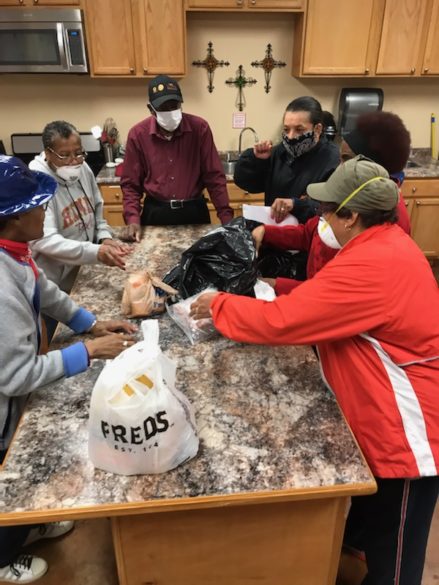
(Witnesses of Faith in Action ministries in the diocese of Jackson are featured each month. If you’d like to see your parish, school or group featured, contact the Parish Social Ministry office at psm@ccjackson.org.)

